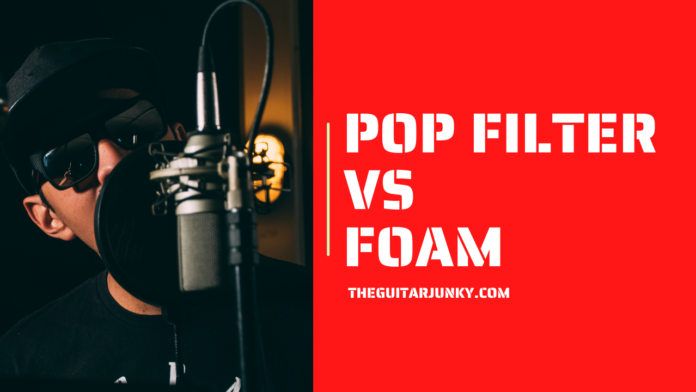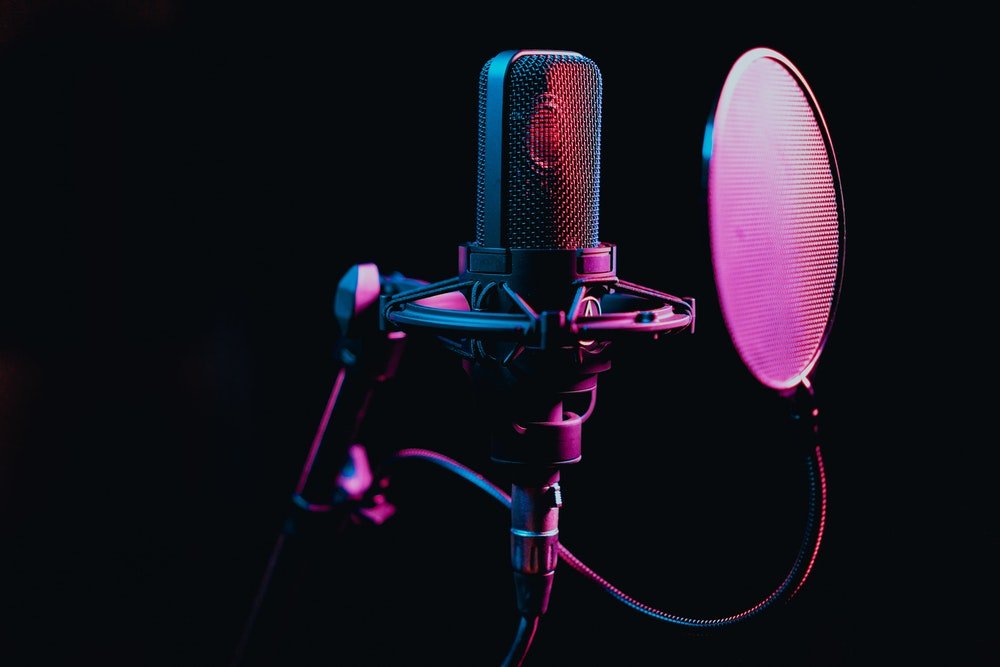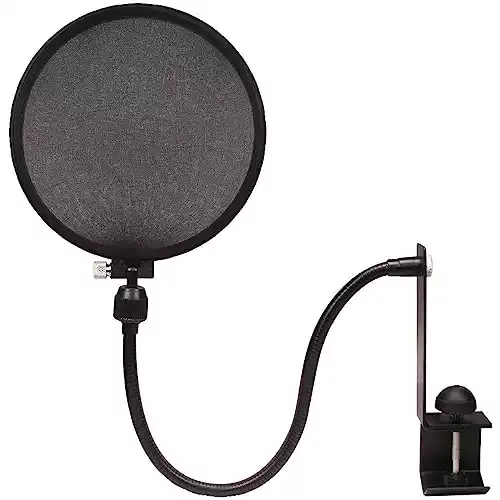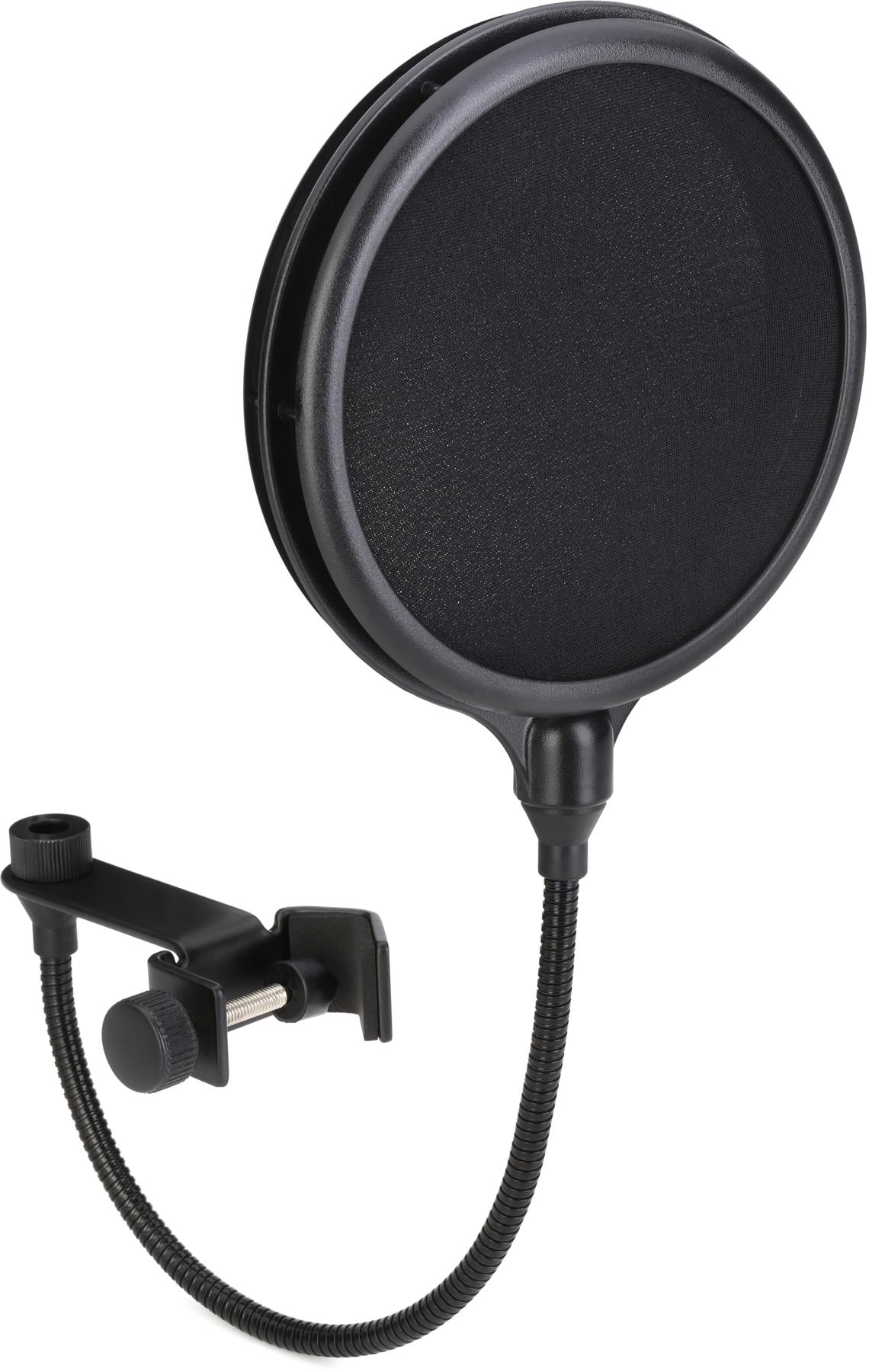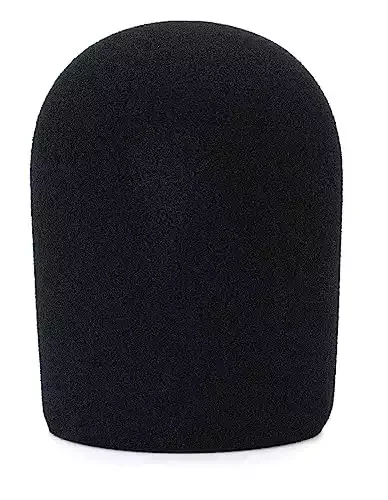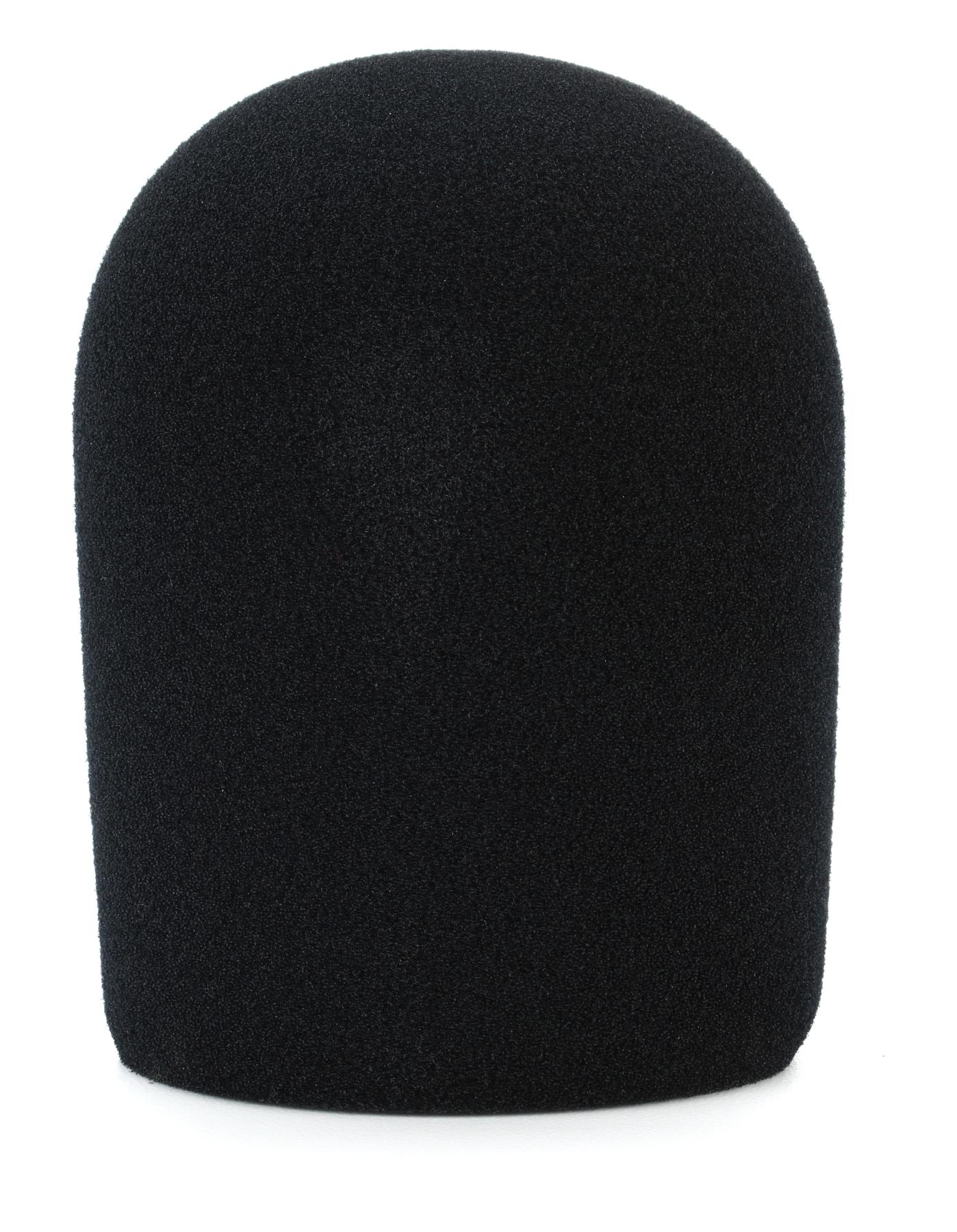Recording a chart-topping song or wowing the audience on the radio or podcast requires only the best microphones.
Unfortunately, it is not often enough that one gets the best mic money can buy.
Even the most expensive mic can never regulate unnecessary, unwanted, and unpredictable sounds.
That is why seasoned broadcasters, announcers, disc jockeys, and recording artists always use sound filters over the mics to produce clear and pure audio.
Two of the most common microphone sound filters today are a pop filter and foam mic cover.
Join me as I present a pop filter vs foam mic cover to help you decide about the right microphone filter to get.
Contents
Why Use a Filter on Your Mic?
Have you ever used a bare microphone without any filter covering?
Was the audio pleasant to the ears, or did you hear annoying popping and airy sounds as you spoke or sang?
Did you find your microphone covered in saliva, dust, dirt, and other particles after use?
If your answer to these questions is affirmative, you already know why you must use a filter on your microphone.
Microphone filters allow you to produce pure, clear, and natural sound without the distracting noise from your breath and the environment.
How to Buy a Microphone Filter
There are several things you must consider when buying a microphone filter.
Filter Size
Filter size is a function of microphone size.
If you have a small and slim mic, it would be best to opt for a small pop filter, too.
Gooseneck Style
The microphone’s gooseneck style and size are another consideration when buying a mic filter.
Small foam mic covers are perfect for microphones with ultra-slim goosenecks.
Installation Ease
Mic filters should be effortless to install, regardless of type or design.
Filter Shape
In general, curved pop filters are better than straight filters because they allow greater freedom of movement.
Material
You have two options: nylon or metal.
Nylon pop filters are perfect for classic sounds, while metallic mesh filters are suitable for contemporary audio.
Pop Filters for Microphones
Pop filters are a favorite of singers, podcasters, streamers, and others who want to produce clear and consistent audio.
These filters have a circular shape positioned between the person talking or singing and the microphone.
You may have seen your favorite singer recording a song in the studio with this device on the mic or a disc jockey at the radio station.
Pros
- Ideal for eliminating sibilance and plosives
- Facilitates easier record editing
- Protects the mic against saliva-related corrosion
Cons
- Not suitable for background noise reduction
- Prone to proximity effect
- Obstructs view of copy
How Does It Work?
Pop filters are most suitable for condenser microphones, deflecting the air downward while allowing sound waves to pass through the filter before reaching the mic.
Like conventional filters, an acoustic filter blocks certain sounds while allowing the passage of other audio, depending on their frequencies.
What Does It Do?
Pop filters eliminate plosive sounds, such as what happens if you speak hard consonants like P, B, and T.
Try speaking words with these letters, and you will notice sharp gusts of air during pronunciation.
An excellent example is the Peter Piper tongue twister, where the letters P and K are more pronounced than the others.
You will also get the same effect with the letters D, K, and G, albeit not as forceful as the other three consonants.
Pop filters are also excellent for minimizing the snake-like hissing sound when you pronounce S or Sh words.
The ‘she sells seashells’ tongue twister is a perfect example of this unwanted sound, known as sibilance.
Pop Filter Types
Two pop filter types are available, classified according to the filter material.
The first type is nylon pop filters, consisting of two layers of stretched nylon.
The nylon layers diffract the airwaves (your breath) and block plosives, preventing them from reaching the mic.
The second type is metallic mesh pop filters made of either perforated metal or woven metal mesh.
Experts consider metallic mesh pop filters the best because their uniquely designed holes deflect air downward while allowing normal soundwaves to pass through.
Ideal For
Pop filters are best for indoor applications, especially for doing podcasts, voiceovers, and streaming videos.
Foam Cover for Mics
Foam covers are accessories that you put over the microphone’s grille to prevent air or wind from going to the mic.
That is why people also call foam covers windscreens.
Live reporters or those broadcasting from the outdoors often use foam covers to produce better, windless audio.
How Does It Work?
Foam mic covers work like pop filters in dissipating low-frequency sounds coming from different directions.
A foam cover’s omnidirectional nature differentiates it from a pop filter, which only diffracts sound coming from the front.
It is about 1.5 inches thick, effectively blocking out noise from 2-MPH winds while reducing the noise from stronger winds.
What Does It Do?
The principal purpose of foam covers is to prevent wind noise from reaching the microphone.
Try watching a news reporter on-scene, and you can see the microphone covered in a thick shroud.
Despite strong winds in the background, you can still hear the reporter loud and clear.
Foam Mic Cover Types
There is only one foam mic cover type. However, two other products deserve mention as effective microphone windscreens.
The first is windjammers that look like expensive fur coats covering the microphone.
These products feature synthetic fur with an inner polyurethane foam lining for additional wind noise reduction.
Windjammers or windsocks are suitable for sporting events and outdoor interviews.
Windsocks with longer fur strands block wind interferences better than short-fur windjammers, capable of handling 15 MPH-strong winds.
The second type is a blimp, a metal enclosure protecting the whole microphone (think Larry King’s RCA mic).
Experts consider this mic windscreen the best because it blocks wave disturbances from all directions.
One can also use it with a windjammer for improved noise interference reduction.
Pros
- Suitable for outdoor applications
- A perfect pair with omnidirectional microphones
- Effective background noise reduction
Cons
- Prone to drying over time
- Ineffective against sibilance and plosives
- Tendency to absorb high-frequency sounds
Ideal For
Foam mic covers are excellent for outdoor presentations and recordings because of their ability to reduce, if not eliminate, wind interferences and other background noise.
Pop Filter vs Foam – Which is Better?
Deciding between pop filter vs foam mic cover is as straightforward as determining where you intend to use your microphone.
Pop filters are excellent for indoor applications, while foam windscreens are suitable for outdoor use. Having both will not hurt.
